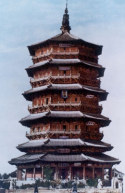Hendrik_2000
Lieutenant General
The tie that bind Shantou aka Swatow is the hometown of Teochew or Choushan . Many of them migrated to SEA they are second to Hokkien as the largest Chinese dialect in SEA most of them migrated to Thailand, Cambodia and Malaysia, Singapore not that many in Indonesia. They are famous for seafood but their signature dish is beef ball. It is made by beating and soften up the beef with metal rod. CCTV is running a show of Along the southern China coast
Along the coast of Hainan Province, Guangdong Province and Guangxi Zhuang Autonomous Region, CGTN collected and recorded the natural sounds of the South China Sea. We launch this special audio and video series, "Listen to the Sounds of the South China Sea" to bring you a natural and pure sound-and-picture experience. This episode takes you to listen to the natural and cultural sounds of Shantou City in south China's Guangdong Province. The sound of waves, birds, , and local songs play a reverb of sea sounds. Let's see the fishermen growing at a seafood farm on Nan'ao island and watch the beautiful sunset at Nan'ao island pier. Then we will pass by the Nan'ao food market and Chen Cihong's Residence, also known as the best overseas Chinese residence in Lingnan. We can listen to the Teochew songs named "a pot of good tea and a pot of moon" and also see people make hand-breaded beef balls, and listen to the sounds of hammering and squeezing meat at Baheli beef restaurant.

Most residents are linguistically . Teochew dialect is a variant of Min Nan (Hokkien-Taiwanese) spoken in the neighbouring Southern Fujian and Taiwan. There are also , popularly known as Half- (半山客), living mainly in Chaoyang District and Chaonan District, although they speak Teochew on a daily basis and practise Teochew culture. The Mandarin-medium education system, widely promoted throughout China, has made most people, especially younger generations, speak Mandarin fluently. Cantonese language TV and labor migrations to the Pearl River Delta has also made Cantonese widely spoken as a third language by the younger generations.
Governmental statistics show that 2.16 million have roots in Shantou, with significant populations of residing in and , which constitute a majority of and a majority of . This is demonstrated by the unusually high number of international direct flights between and Shantou. In addition, there are at least two -speaking air hostesses on board each flight between Shantou and Bangkok. The Teochew presence, furthermore, is evident in Singapore and ; , a coastal city situated at the latter's southernmost tip, is known as 'Little Swatow', due to the majority local populace is dominantly Teochew and as well as the second largest group of the local population in Singapore.
Along the coast of Hainan Province, Guangdong Province and Guangxi Zhuang Autonomous Region, CGTN collected and recorded the natural sounds of the South China Sea. We launch this special audio and video series, "Listen to the Sounds of the South China Sea" to bring you a natural and pure sound-and-picture experience. This episode takes you to listen to the natural and cultural sounds of Shantou City in south China's Guangdong Province. The sound of waves, birds, , and local songs play a reverb of sea sounds. Let's see the fishermen growing at a seafood farm on Nan'ao island and watch the beautiful sunset at Nan'ao island pier. Then we will pass by the Nan'ao food market and Chen Cihong's Residence, also known as the best overseas Chinese residence in Lingnan. We can listen to the Teochew songs named "a pot of good tea and a pot of moon" and also see people make hand-breaded beef balls, and listen to the sounds of hammering and squeezing meat at Baheli beef restaurant.

Most residents are linguistically . Teochew dialect is a variant of Min Nan (Hokkien-Taiwanese) spoken in the neighbouring Southern Fujian and Taiwan. There are also , popularly known as Half- (半山客), living mainly in Chaoyang District and Chaonan District, although they speak Teochew on a daily basis and practise Teochew culture. The Mandarin-medium education system, widely promoted throughout China, has made most people, especially younger generations, speak Mandarin fluently. Cantonese language TV and labor migrations to the Pearl River Delta has also made Cantonese widely spoken as a third language by the younger generations.
Governmental statistics show that 2.16 million have roots in Shantou, with significant populations of residing in and , which constitute a majority of and a majority of . This is demonstrated by the unusually high number of international direct flights between and Shantou. In addition, there are at least two -speaking air hostesses on board each flight between Shantou and Bangkok. The Teochew presence, furthermore, is evident in Singapore and ; , a coastal city situated at the latter's southernmost tip, is known as 'Little Swatow', due to the majority local populace is dominantly Teochew and as well as the second largest group of the local population in Singapore.

